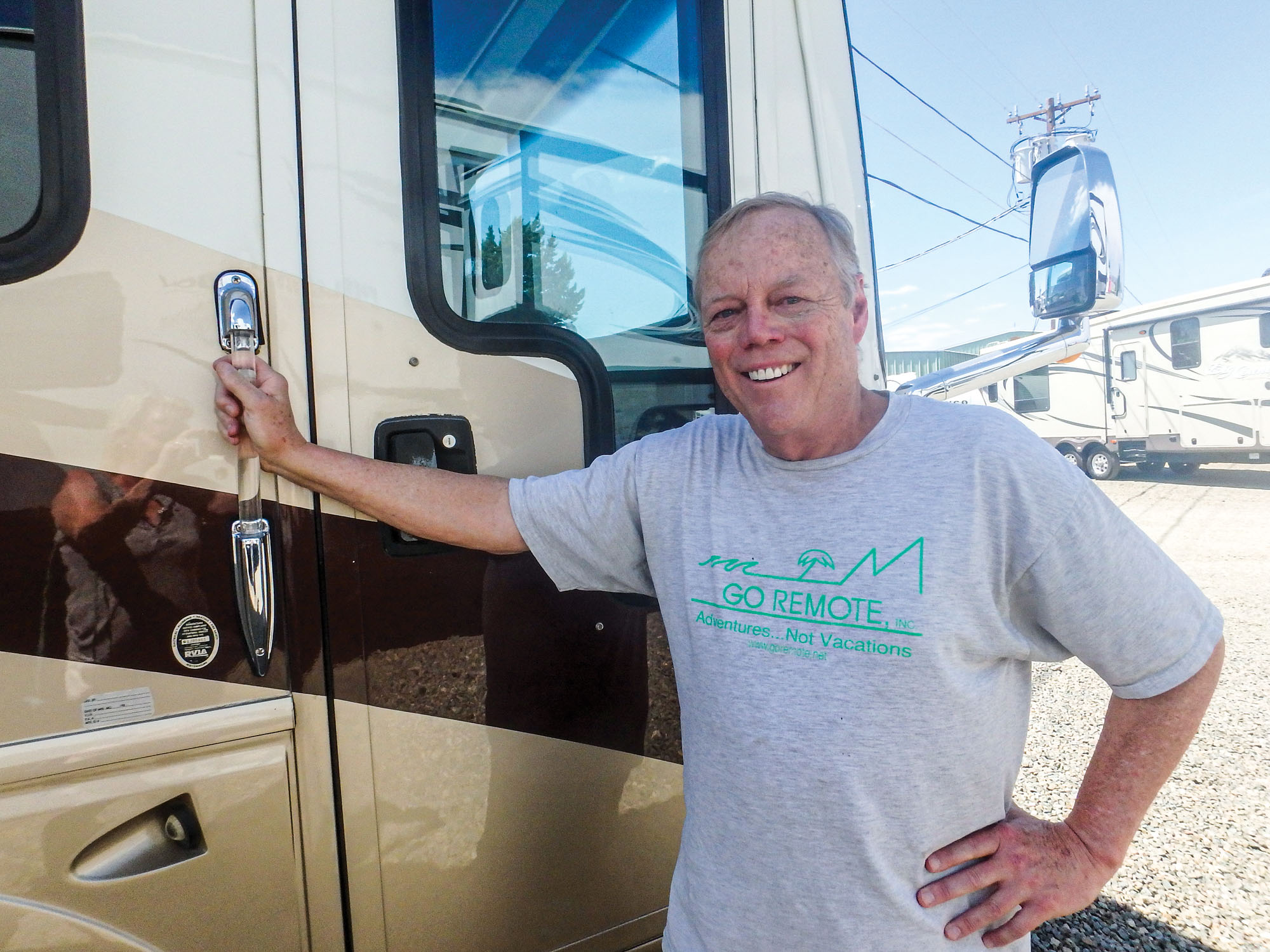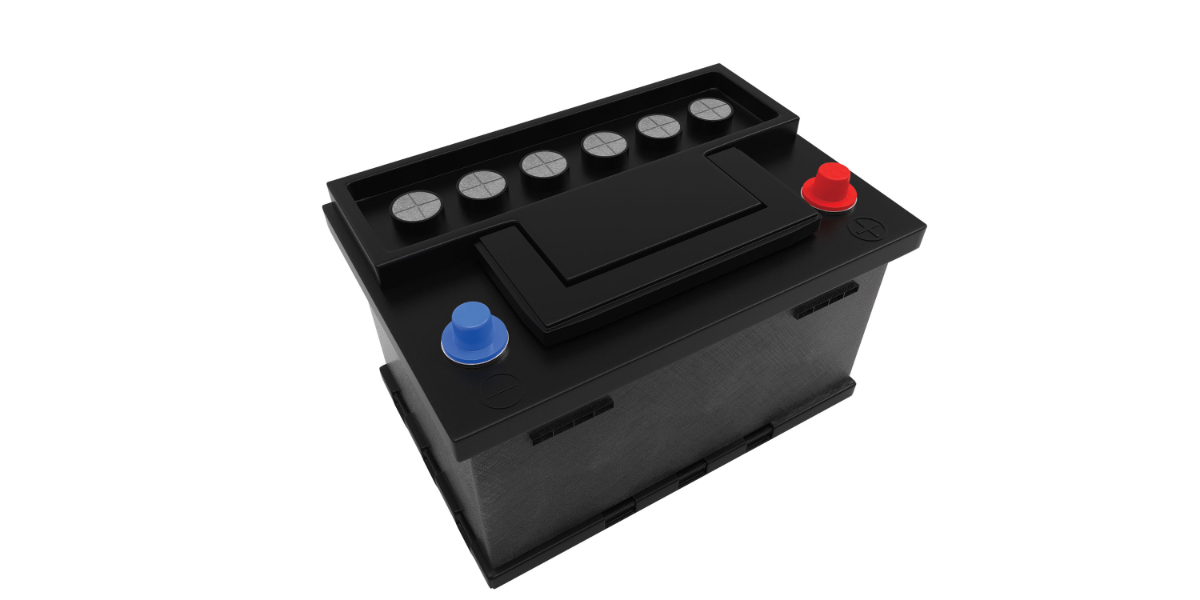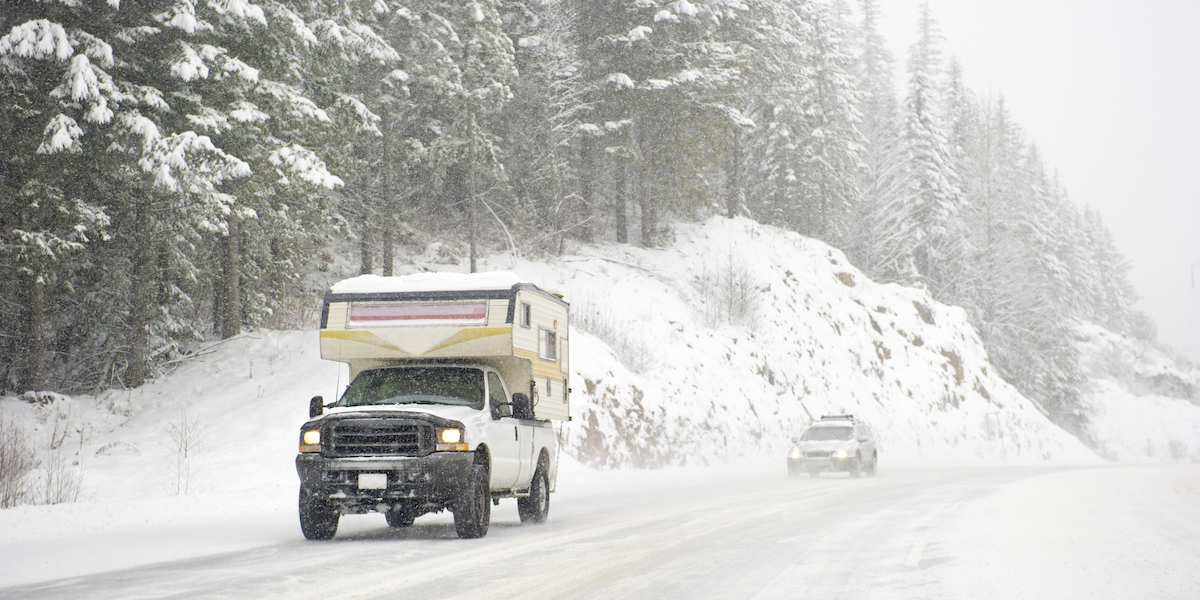Tech Q&A — March, 2022
Failing Diesel Components, Weather Planning, Tire Selection, Generator Search, and Gel-Coat Cracking
Image Caption:
Diesel Component Failures
Q: We have a 2016 Winnebago Journey 38P on a Freightliner chassis with a Cummins ISL9 diesel engine. What are the possible causes of the failure of the turbocharger, high-pressure fuel pump, and turbo actuator? It’s hard to believe that these items failed at 22,000 miles. I want to make sure it wasn’t operator error and, if not, how common or uncommon is this? Thank you for any insight you can provide.
Paul Namkoong, Hollister, California
A: Did you diagnose these failures, or did a shop tell you? It may be possible that a less-than-honest person was trying to sell you more repairs than needed. Let’s take each component separately. Turbos often fail because the engines are shut off too soon after being run hard. The oil in them overheats and carbonizes. Other failures are often caused by lubrication problems.
High-pressure fuel-pump failure is usually linked to poor quality of oil, fuel contamination, low fuel lubricity, or using oil types that are different from the recommendations of the manufacturer. This is because the quality of oil may affect the fuel pump wear rate. Actuator failure usually occurs due to turbo problems and/or oil lubrication failure problems.
The common thread here may be oil quality and/or contamination. I suggest that each part be carefully checked for cause of failure by an independent diesel expert. Also, the engine oil should be tested by a lab that tests engine oil samples. A popular lab is Blackstone Laboratories.
Travel Weather
Q: My wife and I have a two-year-old Winnebago trailer. We are retired and live in Southern California, but basically have camped all over the western part of the country, and a few areas in Canada such as Jasper and Banff. We have read and heard of people traveling across the country and would like to travel across the US, but we feel there is no good information regarding the best way or time to do so.
Our concern is with the horrible weather in the Northeast, tornadoes in the Midwest, and hurricanes along the Southeastern coast. We apologize that this question is not really an RV technical question, but we are hoping you could connect us with a specific website or organization with national weather knowledge. Any help from you or RV Magazine would be greatly appreciated.
Arturo and Karen Moys, Thousand Oaks, California
A: Although this is not really a technical question, it does have to do with driving safety, so I’ll give it a try. Storms don’t come on schedules, but there certainly are seasons for them. Towing on snow and ice is very dangerous, so you probably want to avoid the northern part of the country in winter. According to the National Weather Service, tornado season usually refers to the time of year when the US sees the most tornadoes.
The peak “tornado season” for the southern plains (e.g., Texas, Oklahoma, and Kansas) is from May into early June. On the Gulf Coast, it is earlier in the spring. In the northern plains and upper Midwest (North and South Dakota, Nebraska, Iowa, Minnesota), tornado season is in June and July. But remember, tornadoes can happen at any time of year, and also happen at any time of day or night—though most tornadoes occur between 4–9 p.m.
The Atlantic hurricane season officially starts on June 1 and runs until November 30. In the Eastern Pacific Ocean, hurricane season starts earlier on May 15 and ends on November 30. During peak season, the majority of hurricanes and severe storms tend to hit during August through October, with September being among the most active of months.
I’ve found that the best free weather information provider websites are the National Weather Service, Weather Underground, The Weather Channel, AccuWeather, WeatherBug, and Weather Spark. You can look up average monthly temperatures, rainfall, etc. with these resources and plot out your travels.
Tires for Scamp 16 Trailer
Q: I have a Scamp 16 trailer, and I’m trying to find out what brand of 13-inch tires I should buy. Do you have any suggestions?
Bruce R. Falink, Coon Rapids, Minnesota
A: You might try the new US-built Goodyear Endurance tires. Unlike the older Marathon trailer tire, the Endurance is built to handle heavier loads and provide much-improved durability and tread life. They also have a speed rating of 87 miles per hour (though we certainly don’t recommend testing that out).
I believe the Scamp 16 came equipped with ST175/30R13 tires, but you didn’t mention what model year you have, as they have changed. If you have 175 tires and want more load capacity, you may want to try 185/80R13 tires on the same rims. The C-rated 185s may increase load capacity from 1,350 to 1,480 pounds per tire, or the axle load from 2,700 to 2,960 pounds. Measure the actual loaded weight on a truck scale, then adjust the tire pressure according to the load-inflation table.
This might be a good time to switch to 14-inch tires, which are easier to find, spin slower, and can last longer. Many Scamp owners report doing this with good results and no clearance issues. You need zero offset rims and could switch to D-rated 205/75R14 tires, which are readily available.
Generator Quit
Q: I have an Onan 3000 generator in my 1995 Jayco Eagle 23-foot Class C motorhome. It recently quit producing electricity during a routine check. I had the brushes serviced, but it still wasn’t working properly. I got hold of a factory rep, and he suggested increasing the RPMs, which caused the rotor to disintegrate. Because of its age, I cannot find parts to repair it. Not having a generator isn’t the end of the world, but I feel more comfortable having a complete rig. Any suggestions?
James Wagner, Encinitas, California
A: Sorry for your dilemma. I’m surprised a factory rep would tell you that. Fortunately, due to the age of your motorhome, quite a few of this era are getting parted out, and used gensets are fairly easy to find. I recently found an Onan 4000 with 1,000 hours on it for free on Facebook Marketplace. They’re designed to last about 30,000 hours. A search of Craigslist and other RV classifieds, RV salvage yards, and perhaps eBay should find you one for a reasonable price.
Cracks in Gel Coat
Q: I have a 2022 Thor Windsport 35M Class A motorhome, and have made one trip in it. That was to spend a week in Woodland, Washington, and then take it into the shop at the end of September. It has been there ever since. Among many issues with it, like an electrical socket was dead and the slide on the left side lets light in, there are lots of nitpicky quality-control issues that are annoying. These should have been addressed before it left Thor.
But the main issue is the rear cap has stress cracks under the gel coat, and one is big enough to slide my fingernail into. I am being told by Lazy Days it will not be an issue if I use it to make my winter trip to Texas and Louisiana, but I am concerned, now that it has been in the shop for eight-plus weeks. They don’t know when they can fix the gel coat and cracks. My question is, will this be a problem on a 5,000-plus-mile trip?
I was told to contact Thor to see what they have to say. I am very frustrated—eight weeks and a brand-new unit with a big issue like this, and Lazy Days tells me the rear cap is not connected to the coach, which could cause a mold issue should water pass through the crack. Can you advise?
Steve Towers, Ocean Shores, Washington
A: Hopefully, your dealer will be able to take care of most of these issues soon. I think the high sales volume of RVs in the last year or so, along with difficulty getting qualified employees, has caused many manufacturers to rush the building process and cut corners, which has exacerbated quality-control issues. I suggest you contact Thor by certified mail and go on record as your Windsport having these problems, especially potentially expensive ones such as the cracks, to preserve your warranty rights before it times out.
You should be able to travel with it: I would cover the cracks with Duct Tape or wide clear tape (such as Gorilla Tape) to seal them. When you get back from your trip, remove the tape and the tape’s sticky residue with WD-40 or 3M Adhesive Remover. Careful usage of a heat gun or hairdryer will also soften the adhesive for easier removal. Then get your RV to the dealer to have it repaired correctly. A good RV body shop should be able to repair them and refinish the affected panels so they match the coach. Good luck with it.
Step Damage
Q: I own a 2019 Holiday Rambler Admiral 29M Class A motorhome. The electric step is poorly designed, hanging far too low below the chassis, and has been seriously damaged twice in less than 15,000 miles of use while entering gas stations. Each time I have taken it off, disassembled it, and beat the step frame into close to its original shape. It works reasonably well until the next time. A couple inches of more clearance would make a huge difference. Looks like I could gain about an inch by modifying the support frame, but that really isn’t enough to warrant all that work. I anticipate the next hit will be fatal to the step. Is there another step designed for more clearance that will fit that model coach?
Jim Baird, Paletine, Illinois
A: I don’t know of a thinner step for more clearance. These coaches ride low on a Ford F-53 chassis. There’s an old saying, “If you can’t lower the river, raise the bridge.” You might consider raising the front end about 2 inches, which shouldn’t noticeably affect ride or handling. Take it to a shop that works on truck suspensions and springs. They may be able to install a metal spacer between the spring and axle or re-arch the front springs to get more height.
Freshwater Loss
Q: I own a 2020 Tiffin Allegro RED 37PA Class A motorhome. I fill the freshwater tank about one-third full when traveling. When I get to my destination, the tank reads empty. It seems to be losing water when traveling. Any ideas about what is happening to the water?
Keith Julian, Monroe, Michigan
A: The water has to be going to one of three places. If it’s not leaking onto the ground from the freshwater tank or fittings, and it’s not getting pumped into the holding tanks by something like a running toilet, then it must be sloshing out the freshwater tank overflow, some of which are very poorly designed, or vent. This is the most likely situation. I would look for sloshed water right after driving, and if necessary, install a temporary catch-can to see if it gets water in it.
Or take the coach to an empty parking lot on a dry day, drive in a straight line, then drive while sawing the steering wheel back and forth. Go back and look for freshwater spillage where you drove. This could also tell you which part of the tank the water is leaking from—right or left, for example —which can help your troubleshooting process.
Winterizing Ice Makers
Q: How do I winterize the ice maker in my RV’s residential-style refrigerator?
Gary Rhoads, via email
A: You will need a compressed air source set to 35–40 PSI to blow out the water in the system. Then you need to operate the water tap on the front of the fridge and the ice maker to get the water out. Then remove the water filter.
Shorepower Cord Question
Q: My RV’s 50-amp power cord has two small blue lights on the male end. One does not light up when connected to the power supply at the campground. What does that mean?
Joe Ulloa, Medford, Oregon
A: A 50-amp power supply is split, sort of like a 240-volt system, with two “hot” legs. I believe the type of cord you have uses small lights to monitor and indicate that power is available on each positive leg of the power outlet. Having one out would indicate that one side of the power circuit is out. This should be brought to the attention of the campground host or manager.
DEF Sensor Failures Follow-Up
Q: This is regarding my letter “DEF Sensor Failures,” published in the December 2021 issue, on our 45-foot 2019 Tiffin Allegro Bus. We had been traveling for three weeks up through New England before this let us down. We had to drive home in our dinghy vehicle since the part was back-ordered. I learned some things from this experience: Always make sure the DEF tank is full when getting diesel fuel, and never add water to it.
When we were towed to a trucking terminal they flushed the tank, but that did not work. Matt Brown’s Truck Repair & Towing, located in Bow, New Hampshire, was very helpful during this upsetting mess and was very graceful trying to get us back on the road, even though they do not normally work on motorhomes.
I got on the phone with Cummins, they informed me the problem was with Tiffin. Tiffin informed me it was a government problem because of emissions regulations; the systems are illegal to bypass. I tried to purchase an extra sensor for backup while traveling. This part was back ordered so the answer was no.
The breakdown was very unsafe as we were on the side of the interstate being hooked to a wrecker. The driveshaft had to be removed to tow it, so we were alongside the road for several hours with 3 feet of coach on the blacktop. Finally, after three weeks, Tiffin sent a DEF sensor to the truck shop.
Patricia Briggs, Fort Myers Beach, Florida & Bemus Point, New York
A: Thanks for the follow-up, Patricia. I’m glad you got going again. Hopefully, this supply chain problem will go away soon.
Decal Removal Tip
Q: We have a Chaparral fifth-wheel trailer. Regarding the question as to how to remove cracking and peeling decals on RVs in the October 2021 issue of RV Magazine: I have used WD-40 with some success. Spray on the peeled area to start loosening the glue. Use a cloth to wipe down as you go.
Henry Siemers, Milford, Iowa
A: Thanks for the tip, Henry. This process is helped along if you apply some heat from a hair blow dryer or a handheld homeowner-type heat gun. Just be sure to keep the dryer moving.

Ken Freund
A member of the Good Sam family since 1988, Ken Freund has been helping readers better understand their RVs for more than 30 years. Throughout his career, he has been a service manager, technician, shop owner, an ASE Certified Master Technician, an instructor of the California Smog Check Program, and author of Haynes Repair Manuals.





